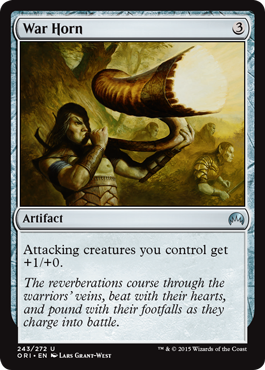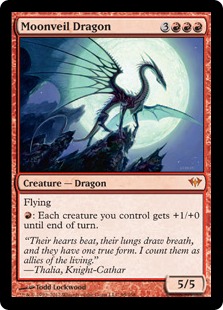There are a number of central truths repeated ad nausea with just about every collectible card game, and one of the most important of these is that a CCG must continually improve upon itself to stay relevant. A CCG needs to evolve, or it will die, becoming a forgotten cardboard relic remembered primarily in message boards and yard sale bargain bins.
We’ve mentioned this predicament before. It’s an intrinsic attribute of any customizable card game. However, so long as a CCG remains in production, it will behave much like the Greek myths of Sisyphus and Tantalus, where the end goal of a complete and perfect game will perpetually and forever be just out reach for players. As such, the longer you play and the more invested you get into them, whether it be CCG like Magic or L5R, or an ECG like Netrunner or Doomtown, that status quo becomes harder and hard to keep you satiated. Once you’ve explored the angles, tried all your experiments, and consumed all of what you feel is effective and interesting to you from the existing card pool, boredom and apathy inevitably set in.
That is the terrifying fear of anyone who is in the LCG / CCG business. Their sales model – and game’s entire existence – in no small part relies on keeping a sizable percentage of their player base continually hooked. Unlike (mostly) fixed card games like Summoner Wars or deckbuilders like Dominion, the goal is to keep you buying new product.
It’s called cardboard crack for a reason, folks.
The longer and more refined a game gets, two factors continually pull the game in different (and often opposite) directions. These factors are challenges to the game designers, as they have to keep both forces in check or risk losing control. The first is complexity creep, or the notion that the more new ideas you add to the game, the more you potentially create a barrier to entry and / or can bog the game down by becoming too complicated for its own good. This can be offset by all manner of tactics, such as removing older rules, spacing out releases, and carefully maintaining the scope and volume of new concepts so that they don’t overload players.
The second is the tendency of cards to become more powerful over time. In almost all cases, CCGs follow the same pattern: some of the inaugural cards are too powerful, whereas others are too weak. Magic is no exception, with plenty of overpowered initial releases, from the Power Nine to the original dual lands. It also had a lot of underwhelming material – especially by today’s standards. Assuming the CCG lives on, the designers take note and adjust to balance the game out more. They continue what works, scrap what doesn’t, and try again.
The more mature a game gets, the less unintentional variance there is with each successive set. That said, to hold said all-important player interest, you constantly must also be trying new things. Therefore, if new card ideas aren’t pushing the complexity envelope, they often instead inch forward by being incrementally more powerful. This is power creep. It too can be offset, for instance, by ensuring that not every card in a set moves in a positive direction; it’s why many times cards are made that are deliberately less powerful than previous incarnations. This ebb and flow can be frustrating to players, but it’s necessary to keep a CCG sustainable.
 Some instances of power creep are low impact and probably are useful useful in the long run. Take War Horn from the soon to be released Origins set. This artifact is a strictly better version of the Alpha card Orcish Oriflamme. Not only does it have the exact same effect, but the newer one is one mana cheaper and no longer reliant upon colored mana. Now, while I personally have nostalgia for the Oriflamme, I haven’t used it in many years. This is partially because even as a novice player I felt it was overpriced for what it was – a problem now solved – and part of it is that there are other cards that simply do it better (i.e. Nobilis of War). To that end, War Horn is very low on the power creep factor, and, really, one long overdue.
Some instances of power creep are low impact and probably are useful useful in the long run. Take War Horn from the soon to be released Origins set. This artifact is a strictly better version of the Alpha card Orcish Oriflamme. Not only does it have the exact same effect, but the newer one is one mana cheaper and no longer reliant upon colored mana. Now, while I personally have nostalgia for the Oriflamme, I haven’t used it in many years. This is partially because even as a novice player I felt it was overpriced for what it was – a problem now solved – and part of it is that there are other cards that simply do it better (i.e. Nobilis of War). To that end, War Horn is very low on the power creep factor, and, really, one long overdue.
But let’s also consider the power creep evolution of Firebreathing. Admittedly, I also have a soft spot for this Red power-up ability more than White’s toughness pump or even Black’s shade ability, in no small part because of Shivan Dragon. I still have a deck or two with Shivan in it, even though as we’re about to see, Dragons have seen all manner of power creep in recent years.
Firebreathing started out as a simple Aura or creature ability, tied to a single creature. In time, though, came Ghitu War Cry (and later reprinted as Captive Flame), which kept the singular pump ability but detached it from a creature to give you the ability to pump any creature for a single Red mana.
So, what’s the next logical step? Why spending one Red mana to pump all of your creatures! Not only would that be a pretty powerful effect, but it’d be a pretty notable instance of power creep, right? Would Magic even do such a thing?
Of course, dear addicts, the answer is that they absolutely would. In fact, they already have.
Today we have: Moonveil Dragon

Name: Moonveil Dragon
Edition: Dark Ascension
Rarity: Mythic Rare
Focus: Creature Buffing
Highlights: When Moonveil Dragon appeared in the middle of the Innistrad block, a lot of discussion was had about it. Surprisingly, the discussions didn’t center much about what the card even did, but why it was even there to begin with. After all, Innistrad was a gothic horror set, full of zombies, ghosts, and werewolves. When Wizards decided to admittedly shoehorn a dragon into the set, people were either confused (since it seemed out of place), or annoyed that a high fantasy dragon was deliberately included just to boost sales.
It’s hard to argue against either point of view, as both certainly have merit. As for the card itself, though, it is pretty cool looking, even if it could have been better served elsewhere.
From a utilization perspective, Moonveil Dragon is the type of Commander card that doesn’t require a lot of in-depth explanation for its usefulness; what it does is pretty self explanatory. Still, a couple things bear mentioning.
The first is that Moonveil is still quite on par for the mana curve of large dragons, costing six mana. Six mana for a 5/5 flyer has always been considered a worthwhile investment, and even 20 something years later, its value hardly changes with Moonveil here. This easily makes it a worthwhile inclusion for a larger flyer.
The second is that this dragon of the night offers a subtle but powerful buffing effect. People have a tendency of overlooking the usefulness of Firebreathing as a mechanic. This works to your advantage, as it likely won’t garner players insisting for immediate removal from the board. Think about it: if this is the only creature you have out, Moonveil Dragon effectively is a next generation Shivan, being able to boost its own power whether you’re attacking or blocking. That makes it a good deterrent, but not something that demands to be killed on the spot.
Its propensity for being a removal target can change, however, when Moonveil’s true potential rears its head at the helm of a wave of creatures benefitting from its power-boosting effects. With some heavy hitters or an army of tokens at your disposal, unspent Red mana can make even the tiniest of armies do some massive damage. Whether used as a powerful wall of fire when blocking or as is more likely the case, going to claim someone’s head, Moonveil will not disappoint.
Yes, Moonveil may be evidence of the game’s power creep, but as impressive as this economically attainable specimen is from a Firebreathing mechanics standpoint, it’s at best in the middle compared to where other cards have gone power-wise over the years. Or even dragons in the last 12 months for that matter. While that notion of trying to keep up with the newer iterations is a little daunting, it’s also part of that natural CCG process. Evolve or die. As players, we are forced to evolve with it or lose interest in playing. That doesn’t mean we have to go grab the most powerful, most broken cards for our Commander decks whenever they come around, but it does mean that there may come a time when an Orcish Oriflamme gets replaced with a War Horn, and a Shivan may fall to a Moonveil.
Just don’t tell my Shivans I said that…
Keep an eye out for us to be regularly featuring other more accessible-but-worth-it Commander cards going forward. In the meantime, we’ll keep the light on for you.
![]()
You can discuss this article over on our social media!
Do you have a particular Commander card to suggest for us to shine a future Spotlight on? You can send suggestions to ryan@cardboardrepublic.com
